
All photos courtesy of the Illinois Department of Natural Resources.


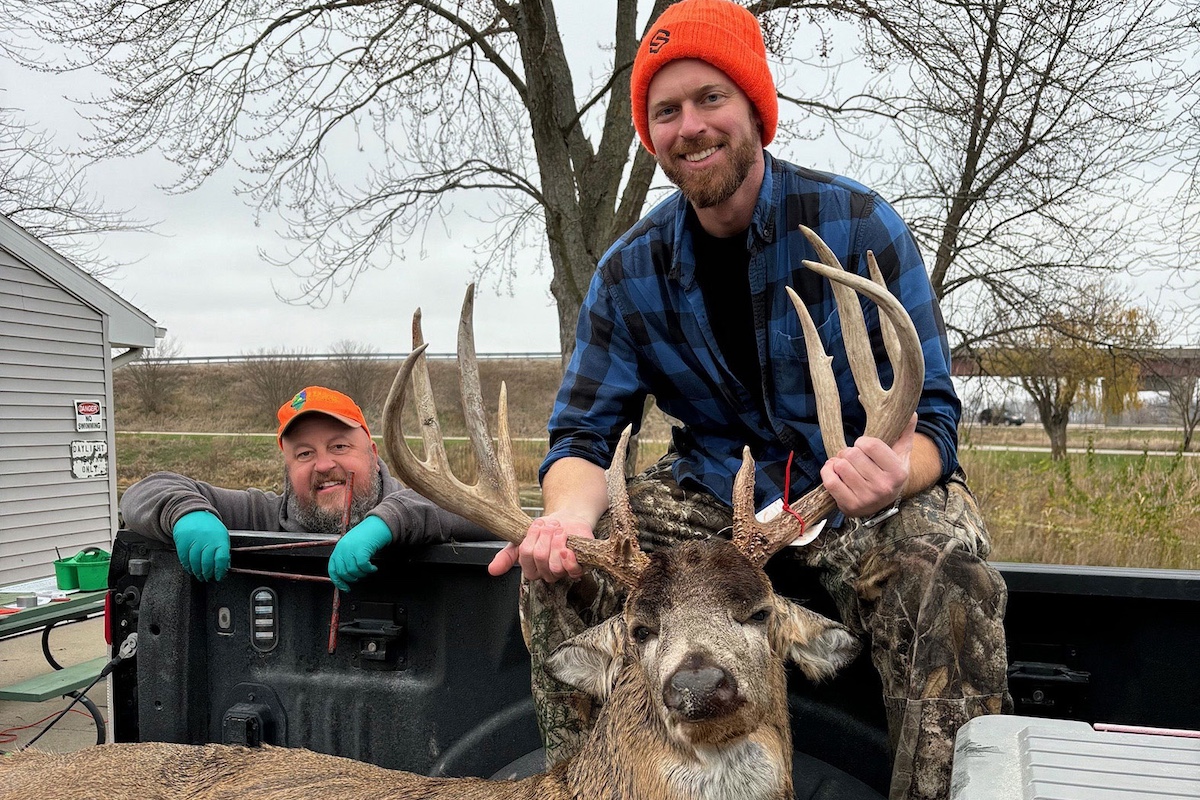
All photos courtesy of the Illinois Department of Natural Resources.
As we move beyond the dog days of summer into the cooler autumn months, wildlife professionals of the Illinois Department of Natural Resources (IDNR) are preparing for the start of the 24th consecutive season of chronic wasting disease (CWD) management. Ongoing since 2002 following initial detection of the CWD in a female white-tailed deer harvested in Boone County, the Illinois CWD program remains the longest active management effort in the United States. The cornerstones of the CWD program include the concurrent use of two approaches, surveillance and management, to protect and maintain healthy deer populations while minimizing the area throughout the state where disease is known to occur.
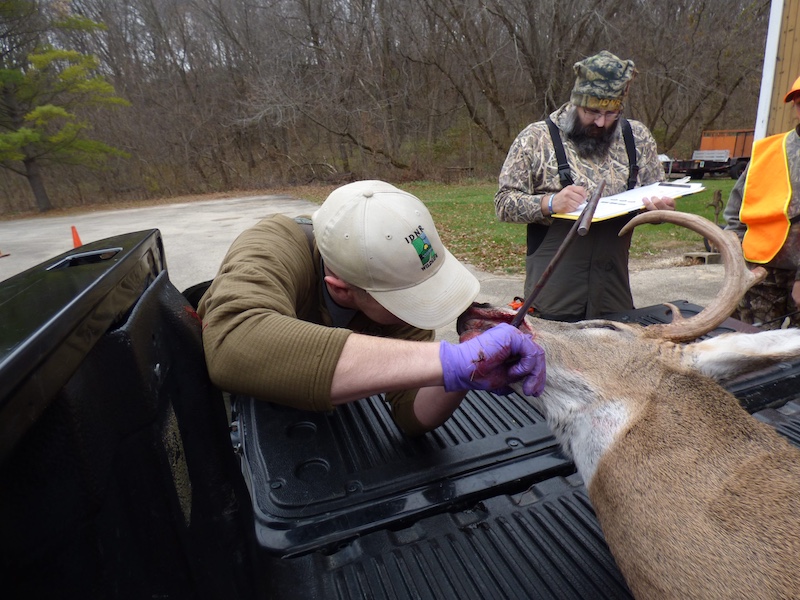
Surveillance goals are achieved by sampling wild deer for CWD and relating samples back to 640-acre (1 mile2) sections of land from which deer were harvested. In Illinois, CWD surveillance relies primarily on collecting samples from hunter-harvested deer (via mandatory check stations and submission at meat lockers and taxidermists), suspect deer, roadkill, and IDNR sharpshooting to identify spatial distribution of CWD across known areas of infection and to identify new disease foci across the state.
During the 2024-2025 deer season, statewide surveillance sampling resulted in identification of 427 CWD-positive hunter-harvested adult deer, including six individuals from four new counties (Adams [1 adult buck taken by a firearm hunter], Marshall [2 adult bucks taken by firearm hunters], Peoria [1 adult buck showing clinical signs of disease infection] and Putnam [2 adult bucks taken by firearm hunters). Except for the suspect deer from Peoria County, all new positives were identified through IDNRs meat locker surveillance program. Since samples collected from meat lockers are typically submitted by cooperators after the close of hunting seasons, test results were not available in time for follow‐up surveillance sampling during the winter of 2025. Importantly, CWD surveillance informs adaptive management by targeting localized deer removal (sharpshooting) of CWD-infected animals within 2-section buffer zones around known CWD-positive sections. Ongoing CWD management depends largely on disease prevalence and the location of the county within the current CWD management zone.
Adaptive management strategies for the 2025-2026 deer season have been specified in the newly implemented CWD Pilot Project (2025-2029; hereafter “Pilot”). IDNR is evaluating potential impacts of hunter-based harvest and targeted surveillance on temporal and spatial changes in disease dynamics in endemic counties characterized by high (greater than 5 percent) CWD prevalence, low (less than 5 percent) CWD prevalence, newly detected/emerging counties adjacent to the endemic zone, and newly detected counites outside of the northern part of the state where active management is occurring.
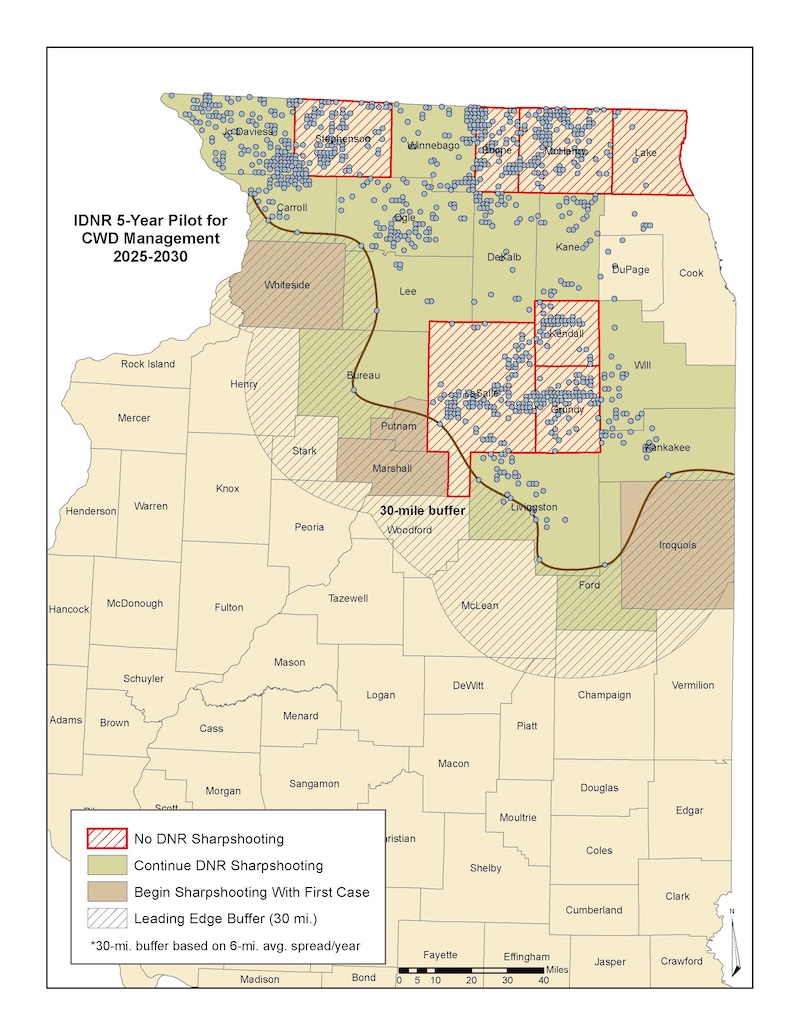
Targeted surveillance sampling will not be conducted in endemic counties (Boone, Grundy, Kendall, Lake, LaSalle, McHenry and Stephenson) with greater than 5 percent prevalence to better utilize staff resources elsewhere to achieve ongoing CWD management goals. For endemic counties (Carroll, DeKalb, Jo Daviess, Kane, Kankakee, Lee, Livingston, Ogle, Will and Winnebago) with low (less than 5 percent) CWD prevalence, targeted surveillance sampling will be conducted using data collected via surveillance. During the Pilot, CWD surveillance sampling for endemic counties will remain largely unchanged with the continuation of mandatory check stations and voluntary submission of samples for disease testing.
In newly detected (Putnam, Marshall) counties adjacent to endemic counties, mandatory check stations will be established and surveillance sampling conducted as needed for more than a year following initial CWD detection. IDNR is actively working to open check stations in Marshall County in future years, though this requires logistical planning, identifying appropriate cooperative venues, and securing field staff to operate the check stations. In the interim, hunters who harvest deer in Marshall and Putnam counties during the 2025 gun deer season must register their animal(s) online or by phone no later than 10 p.m. CST the day of being harvested. It is unlikely that check stations will be opened in future years in Putnam County given its small size and proximity to existing check stations in neighboring counties. A list of 2025 firearm deer check station locations is here.
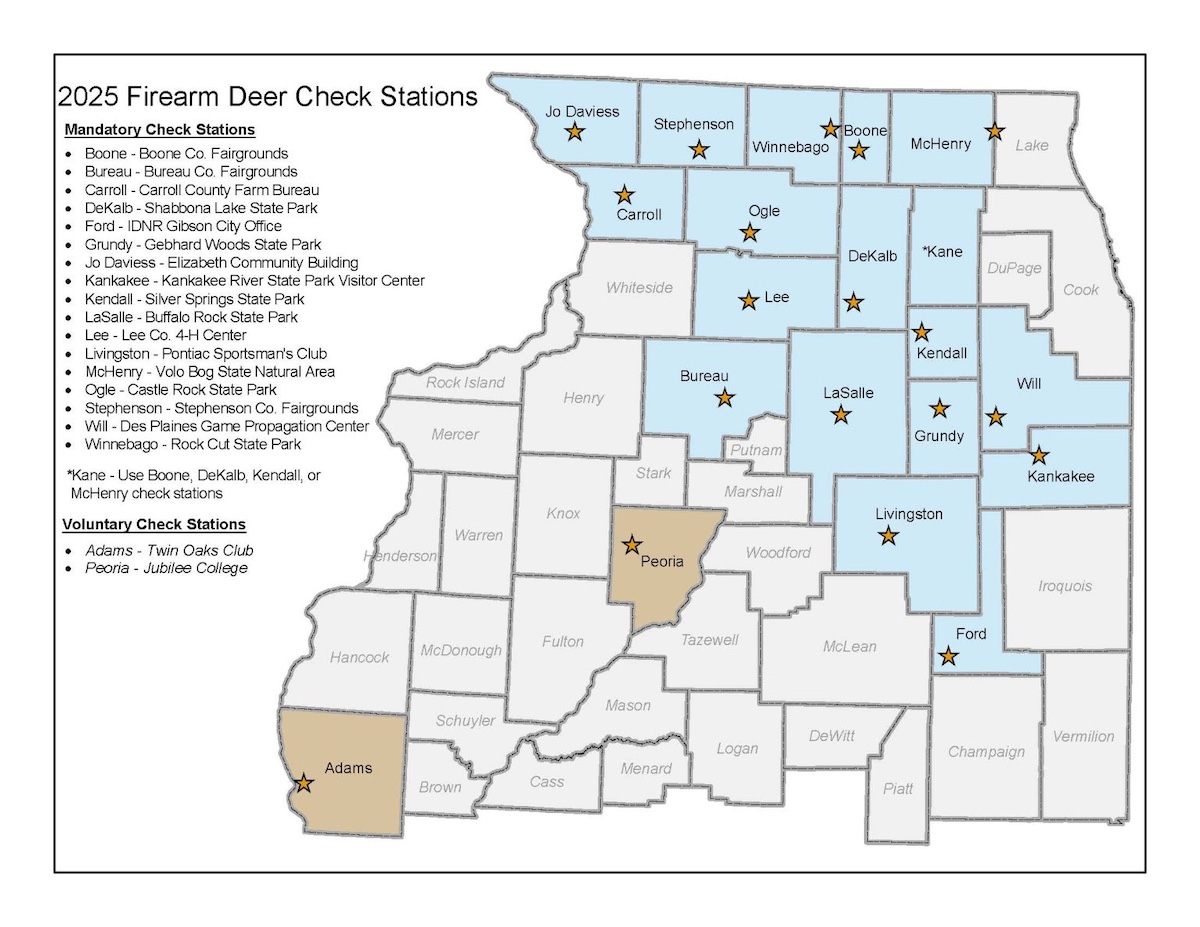
In emerging or newly detected counties downstate (i.e., southern two-thirds of counties, including Adams and Peoria), IDNR will establish voluntary check stations to facilitate surveillance sampling as needed for more than one year following initial CWD detection to better assess disease dynamics in low prevalence areas and their potential role in the continued spread of the disease across the state.
Voluntary check stations in Adams (Twin Oaks Club, 2702 Bonansinga Drive, Quincy, IL 62305) and Peoria (Jubilee College Office, West Fussner Road, Brimfield, IL 61517) counties will be open during the first and second firearm deer seasons from 8 a.m.-8 p.m. for successful hunters interested in having their deer tested for CWD. Importantly, voluntary check stations will serve only to provide CWD testing services to hunters, so harvested deer must be checked in online or by phone before bringing them in for sampling. Upon arrival, hunters should be prepared to provide IDNR staff with a confirmation number that serves as proof that their deer has been registered, harvest location, permit number and current contact information. Collection of tissue samples is typically completed within minutes, though may be delayed slightly depending on how many additional animals are being sampled at the time of arrival. Following the collection of samples, IDNR staff will be available to communicate with hunters about any questions or concerns they have about CWD. Hunters who voluntarily submit samples will be provided with CWD deer pins and informational brochures prior to their departure.
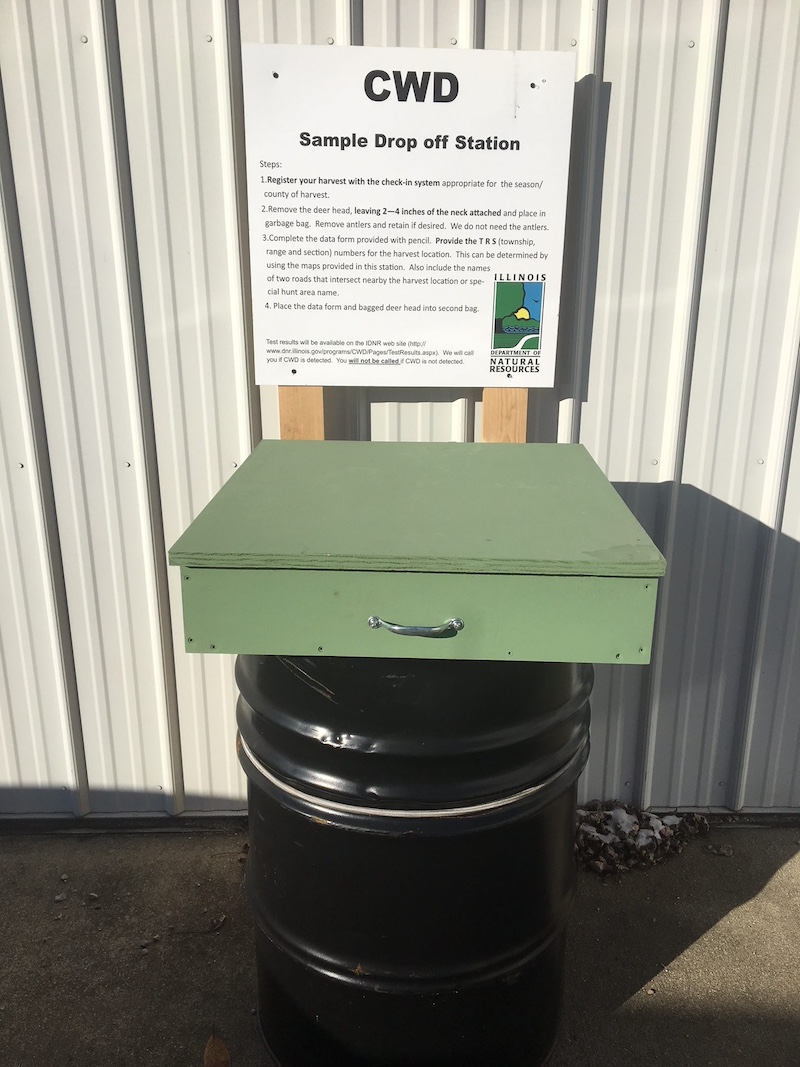
Continued implementation of the Pilot will limit use of sharpshooting to low prevalence endemic counties or emerging counties along the leading edge of CWD throughout northern Illinois. Sharpshooting activities will not be conducted beyond the perimeter counties of Whiteside, Bureau, Putnam, Marshall, Livingston, Ford and Iroquois. Alternatively, IDNR will continue to evaluate the use of harvest-based approaches aided by increased harvest in all counties beyond the leading edge of disease infection to better assess the efficacy of sustainable CWD management in future years.
As in past years, IDNR will maintain the use of barrel drop-off locations as a primary surveillance method for obtaining samples for statewide CWD testing. Throughout the Pilot, there are currently no plans to establish mandatory check stations during the archery season primarily due to the extended season length and inefficiency of sampling a large volume of deer in a short time period as currently provided by annual gun deer seasons. However, IDNR will continue to explore the future use of statewide voluntary hunter mail-in sampling kits to aid in expanded surveillance and sustainable disease management in future years, particularly in newly emerging CWD counties.
A management program of this magnitude and duration cannot be conducted without significant contributions by many partners, including (but not limited to) IDNR staff from multiple divisions and federal collaborators at the United States Department of Agriculture APHIS Wildlife Services. Lastly, we appreciate the ongoing participation by Illinois deer hunters in CWD surveillance and landowners who grant access to private property to aid in active disease management, without whom CWD management in Illinois would not be possible. Additional information on Chronic Wasting Disease can be accessed at https://www2.illinois.gov/dnr/programs/CWD/Pages/default.aspx.

Christopher N. Jacques is the Wildlife Disease, Large Carnivore and Invasive Species Manager for the Division of Wildlife Resources, Illinois Department of Natural Resources.
Submit a question for the author